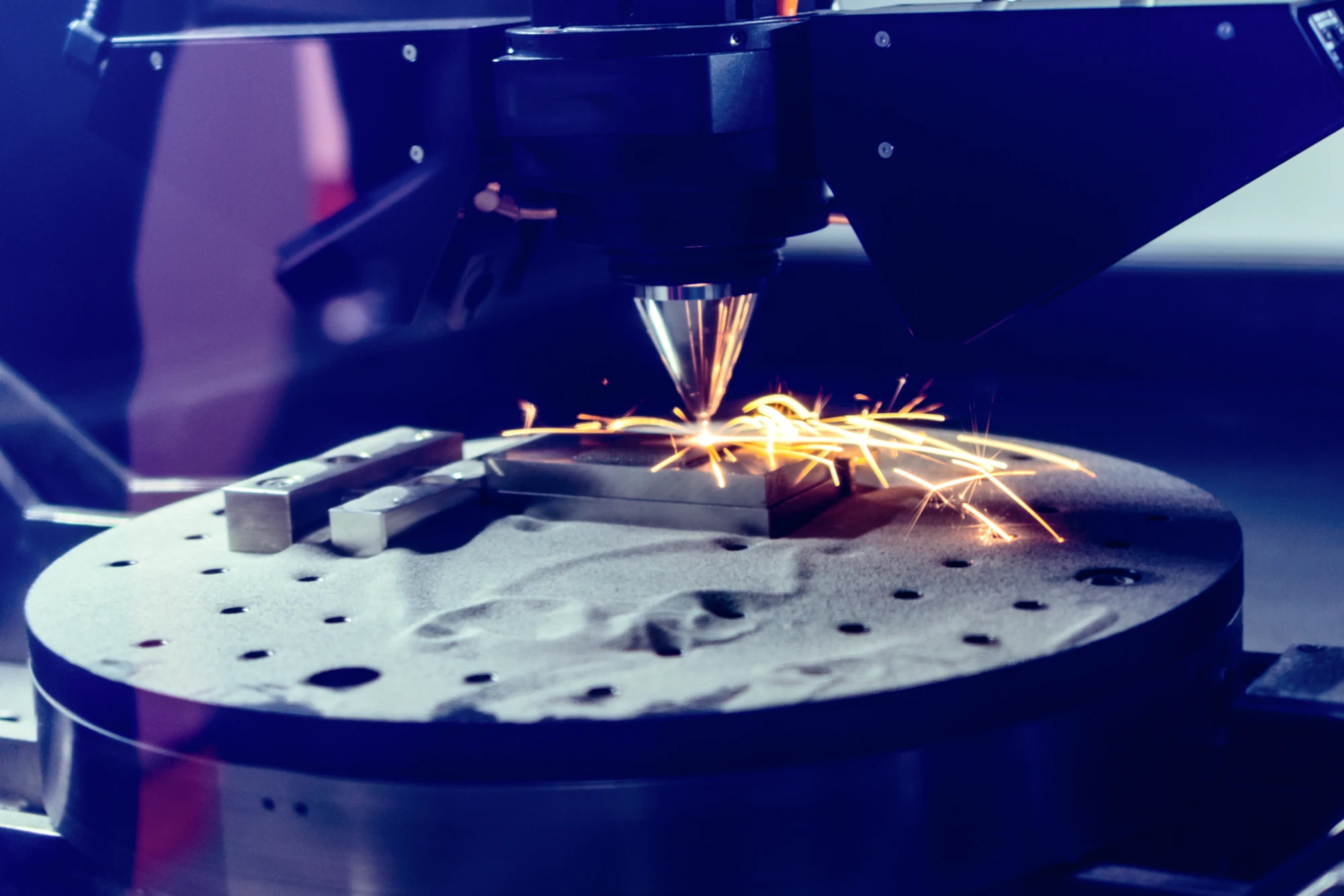
Electron Beam Melting vs. DMLS for Metal Manufacturing
Over the years, metal additive manufacturing has progressed from a novelty for rapid prototyping to a technology that can produce end-use products. Along the way it’s divided into several offshoots, including two of the most well known, electron beam melting and direct metal laser sintering (DMLS).
Today we’re going to take a look at the electron beam melting and DMLS processes, including benefits and limitations, and common areas of application of each technology.
What is Electron Beam Melting?
During the electron beam melting process, an electron beam fuses metal particles to create a 3D part. This process takes place in a vacuum chamber to ensure a clean, controlled build environment and to prevent oxidation.
As with any additive manufacturing process, electron beam melting begins with a 3D model created in a computer-aided design (CAD) program. The file is sent to a slicing software that converts the model into printing instructions that are sent to the chosen machine.
How the Electron Beam Melting Process Works:
- A thin layer of metal powder is deposited onto the build plate
- As the powder is preheated, an electron beam melts powder in the areas specified by the 3D file
- The next layer of metal powder is deposited, and the electron beam melts and fuses the layers
- The process repeats until the part is complete
- Excess powder is removed, and the part undergoes post-processing, including sanding, polishing, and heating in an oven
Benefits of Electron Beam Melting
- Electron beams are more powerful than the lasers used in other additive manufacturing processes. Also, multiple beams can work at the same time, leading to faster printing times
- Parts and functional prototypes possess high density because the powder is completely melted
- Unused material doesn’t go through the sintering furnace, so it can be recycled
- Needs fewer supports compared to laser powder bed fusion technologies
Limitations of Electron Beam Melting:
- Only works with a limited number of metals (titanium and chromium-cobalt)
- Reduced accuracy compared to laser printers due to the slightly wider electron beam
- The materials and machines are much more expensive than traditional manufacturing methods
- Small print volume (the largest electron beam melting printer has a build volume of 350 x 350 x 380 mm)
- Surface finish is less smooth than parts produced via DMLS
Electron Beam Melting Applications:
In addition to rapid prototyping, electron beam melting is popular in:
- Aeronautics and motorsports: The strong, high-density parts it produces makes it ideal for producing fuel nozzles and engine chambers. See how SpaceX is using DMLS technology
- Medical: To manufacture custom prostheses and skull implants
What is Direct Metal Laser Sintering (DMLS)?
During the DMLS process, a high-wattage laser slowly moves across the print surface, where it sinters metal powders and alloys. Additional layers of powder are applied and sintered until the object is complete.
DMLS processing and post-processing are very similar to electron beam melting, with three main differences:
- Unlike the electron beam melting process, the metal isn’t heated enough to melt it completely
- Doesn’t need to be done in a vacuum
- A laser is used instead of an electron beam
Benefits of DMLS:
- Works with nearly any alloy
- Can make complex geometries that are nearly impossible to machine or cast
- Creates parts with high strength & other good mechanical properties
- Unused powder can be recycled
Limitations of DMLS:
- Build size is much smaller compared to other additive manufacturing technologies, such as fused deposition modeling (FDM).
- Machines are several times more expensive than binder jetting machines, and not as accurate
- Finished parts are porous relative to a part created with electron beam melting. Porosity can be controlled, but not eliminated, during processing or post-processing
- Metal powders are expensive, with some costing $300-$600 per kilogram
DMLS Applications:
DMLS sees use in a variety of industries, including:
- Medical: Custom prosthetic devices can be printed in high strength materials. The porosity helps bone grow onto the prosthetic structure.
- Dentistry: DMLS can be used to print prosthetics, bridges, crowns, and partial dentures in high-strength materials.
- Aerospace: Products produced through DMLS are all over commercial aircraft and rockets, from simple brackets to complete rocket exhausts.
Which 3D Printing Technology Should You Choose?
The type of additive manufacturing that you choose will depend a lot on the type of part being produced and its application.
In comparison to traditional manufacturing methods, both electron beam melting and DMLS provide increased design freedom, recyclability, and production efficiency.
As 3D metal printing techniques continue to progress, and the costs of the technology fall, metal additive manufacturing will play an increasing role in advanced components, particularly in the aerospace, automotive, and medical sectors. Consult with a metal AM expert to match your application to the right production process.
